#5.5 Measure Twice
Text
Wheel of Time full series spoiler thoughts on EOTW 29-38
A probably semi-regular weekly bonus to my reread blog, since sometimes you realize things on reread that just make you need to yell in a full spoiler space.
It's really fun to look back at the stedding as, oh, this is literally a little piece of another dimension. It might've grown the local seeds and supported the local animals, but it is obviously disconnected from the local reality, to block the One Power and all.
So many references to Hawkwing sending armies across the sea, and yet nobody really believes it, or expects the Return.
The farmer gave Rand the dark, plain scarf… and then Rand wears it around his mouth… almost like a… black veil on this Aielman… OK that's a bit too much ellipsis for me to keep going but I had to squint and see if the words really meant what I thought they did.
In Play For Your Supper, one of the songs Rand names is "Coming Home From Tarwin's Gap", now how would a name like that have made it as far as the 2 Rivs?
Rand starts having little thoughts on the road that he can't quite track the source of. "Too late now." in Four Kings, for example. LTT starting to slip in. Or the taint madness, if you prefer that explanation for the hallucinations. Either way.
Ishy treating oblivion as a reward. Cute.
I feel kinda sneaky putting Mili Skane's name down in ch 33. It's kind of a spoiler, we're not told it, but I like tagging the characters that appear, for future searchability. If she ALSO appears later in the series, well, I wasn't lying about the Companion entry.
Almen Bunt reminded me that Elayne's kids could have a stronger claim to the throne than she did, because of the bloodliney shit Andoran nobles use to measure their kin-distance from the first queen, but only if everyone involved admitted Rand's lineage publicly. And, only because it was Rand's body that she conceived with.
Which gets me on to how weird and icky the Moridin body swap is, because besides everything else, we don't talk enough about how the Dark One resurrected Ishy as Moridin into somebody else's corpse, that body's original soul had his own family and life, and first the DO took it to punish Ishy with continued existence, and THEN Moridin and Rand swapped balefires and then bodies so Rand's in some completely random dude's face and genes.
(I only had about 5.5 hours of sleep last night as I write this, can you tell?)
At any rate, EOTW 34 cracks things wide open for any show-firstie who looks at the X-Ray feature or the episode credits. Episode 1x07 lists Tigraine Mantear instead of Shaiel, so when the first season was finished, seeing so many people go back and start reading the books and be like, well hold on now… That was precious and priceless to witness.
“The Queen is wed to the land,” Thom said as brightly colored balls danced in a circle, “but the Dragon . . . the Dragon is one with the land, and the land is one with the Dragon.” For this to appear here, with Almen Bunt, when his next appearance is just after Zen Rand emerges and the Dragon is one enough with the land to offer a bounty of apples from the orchard on Bunt's sister's farm… Same chapter, same day, still sleep deprived, and I need a moment to just sit in this feeling of beautiful symmetry.
No doubt I'll come back to it when the quote comes up, but: Thom was twice Morgase's age when they were together. Given the dates we have as long as the Fandom.wiki is properly sourced because I don't want to go doing extra digging in the Companion and stuff, that means that 14 years ago, Morgase was 27 and Thom somewhere in the 50-60 range, 55 being a solid guess, putting her at 41 and him at 68 around the start of the series. I'm still very, very glad the show agreed with me that there was no need of him being so old, especially when his love interests skew so young, Mo being the exception but she still looks young.
So much of chapter 36 is just "yep, setup." I daren't even start listing or we'll be here all day and this post will be much longer than I try to keep them, even for two-weekers when the first week's not quite long enough to justify a post. But the one that gets me is Rand finding it funny, the idea of him wanting to be a king, when he will end up the de facto ruler of a decent chunk of the Westlands.
37 and 38 do little in the way of setup but to continue setting up just how much Byar's gonna nurse that grudge for the next 12 books or two years. Well, that and finally showing Perrin's golden eyes. Mo asks if this was foretold, and well, we know it was… just not in a prophecy she'd have seen. Verin has, though.
I will say, I prefer how Egg and Perrin rescued themselves in the show, even if the wolf stuff maybe could have been moved forward into season 1 to make it make a little more sense to show-onlys.
And, do we think Mo was Warder-compelling Lan not to go after Nyn? Or just reminding him that it's out of character and out of keeping with his guiding principles? I'd like to think Mo treats Lan better, BUT she does hand off his bond to Myrelle without telling him later soooo…
#wheel of time#wot#the wheel of time#twot#wot book spoilers#wheel of time full series spoilers#wot full series spoilers
3 notes
·
View notes
Text
China rises to first place in most cited papers | Science
For the first time, China has slightly edged out the United States in the number of most cited papers, a key measure of research impact, according to a Japanese science policy institute. The milestone provides fresh evidence that China’s scholarship, known for its burgeoning quantity, is catching up in quality as well. “People are writing off China, [saying] they’re putting out a lot of stuff but it’s not good quality,” says Caroline Wagner, who studies science policy and innovation at Ohio State University, Columbus. “That’s just short-sighted.”
Scholars disagree about the best methodology for measuring publications’ impact, however, and other metrics suggest the United States is still ahead—but barely.
For the new report, Japan’s National Institute of Science and Technology Policy (NISTEP) tallied the top 1% papers in terms of citations, a rarified stratum inhabited by many Nobel laureates. Many such elite articles have authors from multiple countries, however, which complicates the analysis. In one study, NISTEP used a method called “fractional counting” to divide the credit. If, for example, one French and three Swedish institutions contributed to a paper, France received 25% of the credit and Sweden 75%.
Using that measure, China accounted for 27.2% of the most cited papers published in 2018, 2019, and 2020, and the United States for 24.9%. Next was the United Kingdom, with 5.5%; Japan was in 10th place. (U.S. researchers were still slightly ahead when NISTEP used a less fine-grained method that credits every country that contributed to a highly cited paper equally, regardless of how many of its institutions were involved.)
Cao Cong, a science policy scholar at the University of Nottingham’s campus in Ningbo, China, says the methodology may overstate China’s contributions to internationally co-authored papers. “The question is who—the Chinese or their international collaborators—led the studies,” he says.
The question is who—the Chinese or their international collaborators—led the [high-impact] studies.
Cao Cong
University of Nottingham, Ningbo
Still, China’s rising production of top-cited papers is “remarkable,” NISTEP says; 2 decades ago it only ranked 13th in the fractional counting metric.
In 2016, China passed the United States to become the world leader in the number of published papers. But critics have faulted the quality of Chinese research, pointing to policies—now being phased out—that provided professional rewards for authors based on the sheer number of papers published. They also noted that China-based paper mills, which provide researchers with authorship slots in exchange for money, appear to be growing in number. But the new study shows China is getting better at doing the kind of top-notch science that gets cited by many researchers.
Other measures of impact still put the United States ahead. The State of U.S. Science and Engineering 2022, a report published by the U.S. National Science Foundation (NSF) in January, addressed one problem with reports such as NISTEP’s: By counting numbers of highly cited papers, they favor big countries and those that spend more on research, just as big countries tend to do better in Olympic medal rankings. NSF instead measured the share of each country’s papers that are highly cited, which allows for comparisons across countries regardless of how much they publish. Its analysis showed U.S. papers were highly influential: Of those published in 2018, more than twice as many ended up among the 1% most cited papers as expected based on the country’s total output. China published 20% more top-cited papers than would be expected. (Several countries, including Canada and the United Kingdom, that publish fewer papers overall ranked ahead of both the United States and China on this measure.)
The United States and China were essentially tied in yet another study, published in Scientometrics in 2019 by Wagner and colleagues, that used a different method. Like the new report from Japan, it found that China published somewhat more papers in the top 1% most cited than the United States that year. But on a score for actual-versus-expected numbers of such papers, the margin between the two countries was not statistically significant.
Another paper, published by Wagner and others in 2020, concluded China’s research is slightly more innovative than the world average. That study tracked how often papers’ reference lists included atypical combinations of journals in disparate fields as a proxy for innovative ideas.
The impact of publications is just one measure of a country’s scientific prowess, however. The United States still leads in other indicators, such as research spending and the number of doctorates awarded. But China leads on others, such as patent applications—and there’s little doubt China’s scientific enterprise is catching up with the rest of the world at an unprecedented speed.
New post published on: https://livescience.tech/2022/08/17/china-rises-to-first-place-in-most-cited-papers-science/
2 notes
·
View notes
Link
Check out this listing I just added to my Poshmark closet: Wittner 𖤍 Coopers Ankle Strap Block Heeled Leather Sandals 𖤍 Dark Cognac 36 6M.
0 notes
Link
Check out this listing I just added to my Poshmark closet: Khloy Tall Stiletto Boot.
0 notes
Text
FDA approves capivasertib with fulvestrant for breast cancer
On November 16, 2023, the Food and Drug Administration approved capivasertib (Truqap, AstraZeneca Pharmaceuticals) with fulvestrant for adult patients with hormone receptor (HR)-positive, human epidermal growth factor receptor 2 (HER2)-negative locally advanced or metastatic breast cancer with one or more PIK3CA/AKT1/PTEN-alterations, as detected by an FDA-approved test, following progression on at least one endocrine-based regimen in the metastatic setting or recurrence on or within 12 months of completing adjuvant therapy.
FDA also approved the FoundationOne®CDx assay as a companion diagnostic device to identify patients with breast cancer for treatment with capivasertib with fulvestrant.
The full prescribing information for Truqap will be posted here.
Efficacy was evaluated in CAPItello-291 (NCT04305496), a randomized, double-blind, placebo-controlled, multicenter trial in 708 patients with locally advanced or metastatic HR-positive, HER2-negative breast cancer, of which 289 patients had tumors with PIK3CA/AKT1/PTEN-alterations. All patients were required to have progression on aromatase inhibitor-based treatment. Patients could have received up to two prior lines of endocrine therapy and up to 1 line of chemotherapy for locally advanced or metastatic disease.
Patients were randomized (1:1) to either capivasertib 400 mg or placebo administered orally twice daily for 4 days, followed by 3 days off treatment each week over a 28-day treatment cycle. Both investigational and control arm patients received Fulvestrant 500 mg intramuscularly on cycle 1 days 1 and 15, and then every 28 days thereafter. Patients received therapy until disease progression or unacceptable toxicity.
The major efficacy outcome measure was investigator-assessed progression-free survival (PFS) in the overall population and in the population of patients whose tumors had PIK3CA/AKT1/PTEN-alterations evaluated according to RECIST, version 1.1. A statistically significant difference in PFS was observed in the overall population and in the population of patients whose tumors have PIK3CA/AKT1/PTEN-alteration(s).
In the 289 patients with PIK3CA/AKT1/PTEN-altered tumors, the median PFS was 7.3 months (95% CI: 5.5, 9.0) in the capivasertib-fulvestrant group and 3.1 months (95% CI: 2.0, 3.7) in the placebo-fulvestrant group (Hazard Ratio [HR] 0.50 [95% CI: 0.38, 0.65] p-value< 0.0001).
An exploratory analysis of PFS in the 313 (44%) patients whose tumors did not have a PIK3CA/AKT1/PTEN-alteration showed a HR of 0.79 (95% CI: 0.61, 1.02), indicating that the difference in the overall population was primarily attributed to the results seen in the population of patients whose tumors have PIK3CA/AKT1/PTEN-alteration.
The most common adverse reactions (reported in ≥20% of patients), including laboratory abnormities were diarrhea, cutaneous adverse reactions, increased random glucose, decreased lymphocytes, decreased hemoglobin, increased fasting glucose, nausea, fatigue, decreased leukocytes, increased triglycerides, decreased neutrophils, increased creatinine, vomiting and stomatitis.
The recommended capivasertib dose is 400 mg orally twice daily (approximately 12 hours apart), with or without food, for 4 days followed by 3 off days until disease progression or unacceptable toxicity.
This review was conducted under Project Orbis, an initiative of the FDA Oncology Center of Excellence. Project Orbis provides a framework for concurrent submission and review of oncology drugs among international partners. For this review, FDA collaborated with the Australian Therapeutic Goods Administration (TGA), Health Canada, Israel’s Ministry of Health (IMoH), Singapore’s Health Sciences Authority (HSA), Switzerland's Swissmedic, and United Kingdom’s Medicines and Healthcare Products Regulatory Agency (MHRA). The application reviews are ongoing at the other regulatory agencies.
0 notes
Text
ok so current wants for my insane dream aventurine sub dps build:
crit dmg body with crit rate sub (current one has both 7.7 hp% and 14.5 def% that rolled as well as a measly 2 spd but no crit rate and i need to get his crit rate higher)
new boots that will roll better crit subs! his current boots ARE speed boots that rolled all into 19.4 def% and one roll into 6.1% crit rate but that leaves it with an untouched 5.8% crit dmg
A DECENT DEF% ROPE. my god the hunt for one of these is brutal.
the good relics:
his head piece is pretty good, 5.4 def% but 18.1% crit dmg
gloves are the new knight set i got, turns out his gloves were already knight set and not duke! 5.5% crit rate and 18.7% crit dmg. only dead roll was the added sub which was break effect
his orb is actually imaginary dmg but its got 19.4 def% and 6.1% crit rate and only one dead roll into break effect (11.6%)
overall his build is okay but his crit rate is abysmal, which is why i want a rope with crit rate. the other option would be to get a rope with a good crit dmg sub and then switch his body for a crit rate but his current ones functional as it is with a decent def% sub. i actually have another knight crit dmg body but it rolled twice into atk% and once into both hp% and def% and no times into the poor crit rate which hurts (its at +15).
my only functional crit rate knight body is actually a 4 star and its at +12 with great subs and upgrade rolls, but at the end of the day its still a 4* and the stats really just dont measure up compared to 5* stats, not to mention it only upgraded one good stat (crit dmg) and one dead stat (flat hp) cuz it had to add two stats first. it does bump me up to 55% crit rate but also brings me down to a measly 105% crit dmg. even if i did manage to get a crazy rope that rolled like 24% crit dmg it wouldnt really be great
anyways uh rant over im just annoyed cuz i keep coming very close with the relics i need but just not quite
0 notes
Link
Check out this listing I just added to my Poshmark closet: Ralph Lauren Tote "EUC".
0 notes
Link
Check out this listing I just added to my Poshmark closet: Jessica Simpson Vintage Button Fly High Waist Rise Denim Shorts size 27.
0 notes
Text
5 Best pH-Balancing Cleansers: How To Choose & Use

Your Ultimate Guide To pH-Balancing Cleansers
If you're someone who is passionate about beauty and wellness, you know that maintaining the pH balance of your skin is crucial.
In this article, we'll walk you through the benefits of pH-balancing cleansers, how to choose the right one and provide step-by-step instructions on incorporating it into your skincare routine.

Understanding pH Balance in Skincare
The pH scale measures the acidity or alkalinity of a substance, and our skin has a natural pH level of around 5.5, slightly acidic.
Skin problems such as dryness, sensitivity, and breakouts can occur when the pH balance is disrupted. Using a pH-balancing cleanser helps to restore and maintain the optimal pH level, promoting a healthy skin barrier function.
Benefits of pH-Balancing Cleansers
Let's explore some of the benefits of pH-balancing cleansers that contribute to overall skin health:
Gentle Cleansing,
Restoring Optimal pH,
Enhancing Skin Barrier,
Minimizing Irritation,
Maximizing Skincare Results.

How To Choose the Right pH-Balancing Cleanser
In order to get the most out of your skincare routine, it's important to choose the right cleanser for your skin type:
Ideal pH Range: Look for a cleanser with a pH level of around 5.5, which is similar to the natural pH of the skin.
Ingredients: Opt for cleansers with mild and nourishing ingredients that are suitable for your skin type. Avoid harsh sulfates, fragrances, and drying alcohols, as they can strip away moisture and disrupt the pH balance.
Skin compatibility: Take into account your skin type and specific concerns. Whether you have oily, dry, sensitive, or acne-prone skin, choose a product that addresses your needs.
Allergies and Sensitivities: If you have known allergies or sensitivities to certain ingredients, carefully read the product label and avoid any potential triggers.
Reviews and Recommendations: This can provide insights into the effectiveness and suitability of different products.
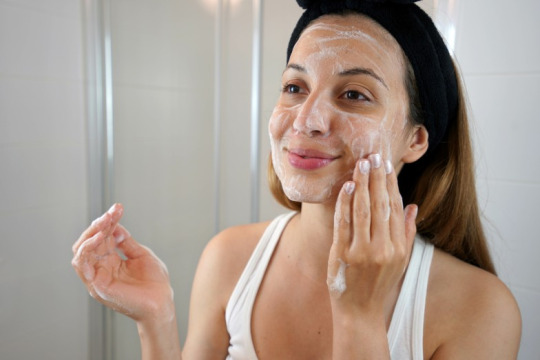
How to Use pH-Balancing Cleanser
Now that you have chosen the perfect pH-balancing cleanser, let's dive into the step-by-step process of incorporating it into your skincare routine:
Step 1: Preparing the skin
Start by gently wetting your face with lukewarm water.
If you're wearing makeup or sunscreen, remove them using a makeup remover or cleansing oil.
Step 2: Applying the cleanser
Place on the palm of your hand an adequate amount of product.
Using gentle circular motions, apply cleanser to the damp face. Avoid the eye area.

Step 3: Cleansing the skin
Massage the cleanser into your skin for about 30 seconds, focusing on areas prone to congestion or excess oil. Be gentle and avoid excessive scrubbing.
Step 4: Rinsing off the cleanser
To remove all traces of cleanser, rinse your face thoroughly with lukewarm water.
Step 5: Patting dry and follow-up skincare
Dab dryly with a clean towel.
Proceed with the rest of your skincare routine, including the application of toners, serums, moisturizers, and sunscreen.

Tips for Optimal Results
Follow these tips to get the most out of your pH-balancing cleanser:
Consistency is Key: Incorporate it into your daily skincare routine for optimal results.
Adjust Frequency: Some individuals with dry or sensitive skin may find that using it once a day is sufficient, while others with oilier skin may benefit from using it twice daily.
Observe Skin Reactions: If you notice any signs of irritation, redness, or dryness, reduce the frequency of use or consider switching to a milder formula.
Monitor pH Levels: This can help you assess the effectiveness of your product and make adjustments if needed.
Seek Professional Advice: If you're unsure about which product is suitable for your skin or have specific concerns, consult a skin care professional or dermatologist for personalized recommendations.
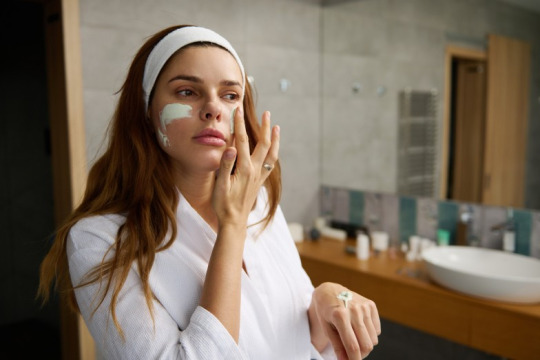
5 Best pH-Balancing Cleansers on the Market
Finding the perfect pH-balancing cleanser is essential for maintaining healthy and balanced skin. We've curated a list of the top 5 products that not only effectively rebalance the skin's pH level but also provide additional benefits to enhance your skincare routine.
Innisfree Blueberry Rebalancing 5.5 Cleanser
The Innisfree Blueberry Rebalancing 5.5 Cleanser stands out with its unique creamy texture and budget-friendly price. This moisturizing formula effectively rebalances the skin's pH level, leaving it hydrated and soft to the touch. The refreshing blueberry scent adds an extra touch of luxury to your skincare experience.
Eucerin pH 5 Wash Lotion
The Eucerin pH 5 Wash Lotion is a versatile cleanser suitable for both the face and the body. Its gentle formula utilizes non-drying "extra mild surfactants" to thoroughly cleanse the skin without disrupting its pH balance. The pH5 Citrate Buffer and ingredients in the formula help protect the skin's enzyme activity and maintain a healthy skin barrier.

COSRX Low pH Good Morning Gel Cleanser
The COSRX Low pH Good Morning Gel Cleanser is renowned for its balancing properties. It gently cleanses the skin while effectively removing dirt and impurities. Enriched with tea tree oil and salicylic acid, it also helps prevent breakouts and has antibacterial properties.
Cetaphil Gentle Skin Cleanser
Cetaphil Gentle Skin Cleanser is a beloved classic known as a cleanser for all skin types. Its soap-free formulation cleanses the skin without stripping away its natural protective oils. The waterless cleansing option makes it perfect for busy days or travel. The new formula now includes hydrating glycerin, vitamin B3 (niacinamide), and pro-vitamin B5 (panthenol) for enhanced skin benefits.
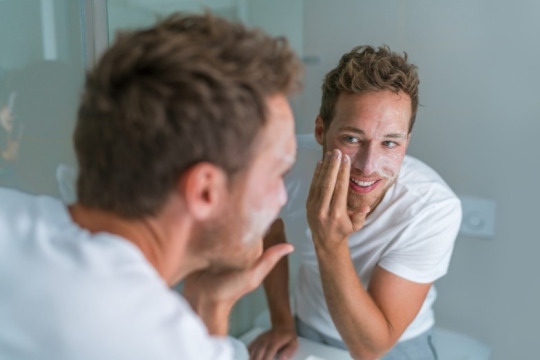
THEFACESHOP Dr. Belmeur Daily Repair Foam Cleanser
If you have sensitive skin, is a must-try. Its low-irritant gel formula has a pH level similar to the skin and contains skin-loving ingredients such as Phytosphingosine and Moroheiya. Phytosphingosine strengthens the skin barrier, while Moroheiya ensures moisture retention. With the added soothing properties of Birch tree sap, it's ideal for those with redness-prone skin.
Using a pH-balancing cleanser is an essential step in achieving healthy and balanced skin. By understanding the importance of pH balance, choosing the right cleanser, and following a proper cleansing routine, you can enjoy the benefits of a balanced complexion. Remember to prioritize consistency, monitor your skin's response, and seek professional advice when needed.
0 notes
Link
Check out this listing I just added to my Poshmark closet: Simply Vera Vera Wang Asymmetrical Sweater.
0 notes
Text
Unlocking the Secrets of Badminton Rules: Your Ultimate Guide
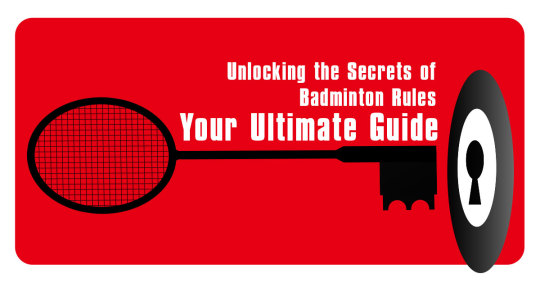
Badminton is a fast and exciting sport that has become popular all over the world because of its exciting rallies and intense gameplay. Whether you're new to the game or have been playing for a long time, it's important to understand the rules well in order to fully enjoy it. In this detailed blog post, we will go through the Badminton Rule Book and explain everything you need to know to become a knowledgeable player. We will cover topics such as court size and how scoring works, so you can explore all the important aspects of the game and feel confident when you step onto the court.
Court Dimensions
In singles, a badminton court is 13.41 metres (44 feet) long and 5.18 metres (17 feet) wide. In doubles, the width increases to 6.1 metres (20 feet).
The net is 1.55 metres (5 feet 1 inch) high at the ends and 1.52 metres (5 feet) high in the middle where it dips.
To make a legal serve, the shuttlecock must pass the short service line, which is located 1.98 metres (6.5 feet) away from the net. Beyond the short service line, there is a line running down the middle to divide the left and right service courts. Additionally, there is a double service line situated 0.76 metres (2.5 feet) inside the baseline. As a result, each service court (there are four in total) measures 3.96 metres (13 feet) in length and 2.59 metres (8.5 feet) in width.
Serving Rules
In a badminton game, the shuttlecock, also known as the birdie, should be hit below the waist height. When serving, players must hit the birdie diagonally into their opponent's service box. Both players need to remain still until the serve is made.
In singles matches, the server begins from the right service court and serves from that side whenever they have an even number of points. On the other hand, if a player has an odd number of points, they serve from the left side. The serving player continues to serve as long as they keep winning points.
In doubles matches, the server starts on the right-hand side and continues to serve, switching sides with their teammate after each successful point. If the receiving side wins the point, they will take over the serve. From that point onward, the player who didn't initially serve for each team will assume the service only when their side wins a point as the receiving side.
Winning Point
A point is won if the birdie (shuttlecock) hits the ground in the opponent’s half of the court, including the lines.
A point can therefore be conceded if a shot goes outside the court boundaries if the birdie hits the net or passes through/under it, or if a player strikes the birdie twice with their racket.
Players must wait for the birdie to cross the net before playing a shot, and while you can follow through over it, touching the net with your body or racket results in a point being conceded.
The Scoring System
In both singles and doubles matches, the games are played in a best-of-three format. To win a game, a side needs to reach 21 points first.
Every time the shuttlecock is served, a point is scored, and it is awarded to the side that wins the rally. The side that wins the rally also gets the next serve.
When the score is tied at 20-20, a side must secure a two-point lead to win the game. However, if the score reaches 29-29, the first side to reach 30 points will be declared the winner.
The BIRDIE
The shuttlecock, also known as the birdie, is the unique "ball" used in badminton.
It is shaped like a cone and made by attaching feathers or synthetic material to a cork or rubber base.
Because of its shape, the birdie always flies with the cork end leading after being struck and remains in that position until it is hit again.
The birdie is composed of 16 feathers and is usually between 62-70mm long. It weighs between 4.74 and 5.5 grams. The feathers at the tip of the birdie should form a circle with a diameter ranging from 58-62mm. The cork or rubber base has a diameter of 25-28mm and a rounded bottom.
Faults and Penalties
During official BWF games, if you make a mistake or commit a fault, your opponent will earn a point and gain the right to serve. One significant fault in singles, according to the badminton rules and regulations, is when you swing and miss the shuttle during a serve. Another fault occurs if you hit the shuttle and it goes beneath the net. Additionally, hitting the shuttle out of bounds is considered a major fault in badminton. Lastly, it is discouraged to touch the shuttle with your body or clothing, as this goes against the basic rules of the game.
As you venture into the world of badminton, having a solid grasp of the rules is crucial for an enjoyable and competitive gameplay experience. In this comprehensive rulebook guide, we've covered the fundamental elements of badminton, from court dimensions and serving rules to scoring systems. Armed with this knowledge, you'll be ready to step onto the court with confidence, whether you're engaging in friendly matches or aiming for tournament success. So grab your racket, lace up your shoes, and let the games begin!
0 notes
Text
GEFORCE RTX 3080
Even if the GeForce RTX 3080 is generally only available in smaller quantities at the market, I want to offer nevertheless briefly from the market start of the KFA2 RTX 3080 SG still a suitable test of this Custom solution. In contrast to the rather narrow Founders Edition, KFA2 relies on the well-known 2.5-slot design and puts a card on the shelves that is supposed to offer a good compromise between performance and cost. However, the test will still have to prove how well this balancing act has been achieved.
First of all, a few key data about the GA102 chip used. The heart of this card is the GA102-200 graphics processor. It is based on Samsung’s 8nm process node designed specifically for NVIDIA and has a total of 28 billion transistors. It measures just under 628 mm², which makes it the second largest gaming GPU ever produced directly under the Turing TU102 GPU. The new shader cores of the Ampere architecture are 2.7x faster, the new RT cores 1.7x faster, while the new Tensor cores are up to 2.7x faster than their counterparts on Turing GPUs. The RT core of the 2nd. The 3rd generation also delivers dedicated hardware-accelerated ray tracing performance and offers twice the intersection of rays/triangles while providing RT graphics and arithmetic operations.
The case of the card is the well-known mix of light metal, plastic and magnetic hardware, which is haptically ok, and visually not too thick. The design with the 5.5 cm installation depth and the 4 mm backplate makes this card a 2.5 slot design with all known advantages and disadvantages. You can love it or hate it, but it doesn’t scare off in the form of this graphics card, the power comes from fuel, as is well known, and it has to be dissipated as waste heat.
With its 1350 grams, the Founders Edition is almost as heavy or light as the 1352 gram Founders Edition! Coincidences are… The length of 31.5 cm is already slightly above average, whereas the rather moderate installation height of only 10.5 cm from the upper edge of the PCIe slot with installed card to the top of the cover is nothing to be afraid of in a case. The funny 12-pin Micro-Fit 3.0 on the top side was replaced by two normal 8-pin sockets, the cooler was also cut out at this point to match. Of course, there is also a little bit of RGB lighting on the upper side.
On the one hand, the back side shows two threaded inserts for the optional attachment to a suitable graphic card stand or mount, on the other hand there are still mysterious looking sockets, but they aren’t that mysterious at all. Here you could also connect a “1-Click-Booster”, an optional 8cm fan module that you could plug into the air outlet on the back. For whatever reason. Impressive are also the 5 tailpipes in the shape of the 5 (of 6) 8 mm heatpipes.
The full test can be found here:
KFA2 GeForce RTX 3080 SG 10 GB in test - not quite as quiet, but really cool | igor'sLAB (igorslab.de)
1 note
·
View note
Link
Check out this listing I just added to my Poshmark closet: Wittner 𖤍 Coopers Ankle Strap Block Heeled Leather Sandals 𖤍 Dark Cognac 36 6M.
0 notes
Text
How to Care for Prayer Plant?
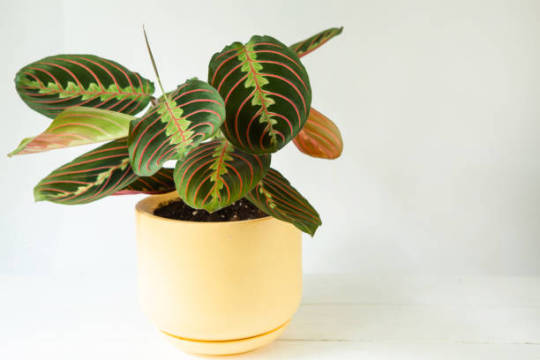
Prayer plant has one of the most beautiful leaves among plants. These tricolor leaves have a green and velvety background with yellow dots on them and red lines on all of them. If you are interested in gardening and you like to bring a colorful and beautiful creature home, then this plant is very suitable for you.
Maranta leuconeura is native to the tropics of the United States and takes its name from the 16th century physicist and botanist Bartolomeo Maranta. About 40 to 50 different species of this plant have been identified, all of which grow on rhizomes, and is a perennial, evergreen plant.
This houseplant is also known as the prayer plant because the leaves of this plant are flat during the day but gather at night and become like arms raised for prayer.
The mature type of leaves of this plant grows up to about 15 cm, which is protruded from the short stem of this plant. Although this plant is known as a houseplant, it is not easy to maintain in the long run.
Prayer Plant Light Requirements: What light is best for prayer plants?
Maranta leuconeura needs a lot of light, but indirectly. This plant should never be exposed to direct sunlight as it will burn its leaves or it may stain and the leaves may lose their color.
Prayer plant can tolerate low light conditions, but in winter this houseplant goes to rest and should be in a skylight environment.
Prayer Plant Watering: How often should you water a prayer plant?
During the growing season, i.e., from spring to early autumn, it is better to water the prayer plant regularly and do not allow the plant soil to dry out. Whenever the soil surface is drying, it is time to water it and you should not let even the soil surface dry completely.
This plant gets thirsty quickly and needs water, but on the other hand, you should also be careful about diseases and fungi, so you should not allow the leaves to get wet or the soil to be too wet. Therefore, watering is another important aspect in order to care for prayer plant.
Dehydration and overwatering can both damage the plant and cause the leaves to turn yellow or drop.
It is better to use water that has room temperature and is not cold. Also, reduce the amount of water in winter.
What is the best soil for a Maranta leuconeura?
Prayer plant likes acidic soil. An excellent soil composition for this plant includes pudding with a pH between 5.5 and 6.0 or a combination of two parts peat moss, one part clay and one part perlite or coarse sand.
Ordinary potting soil can also be used as long as it is well drained. If you feel your soil is not well drained, you can improve it by adding perlite or coarse sand to the soil. Make sure the pot has drainage holes.
Prayer Plant Temperature Tolerance
Now, we come to temperature which is assumed to be principal to care for prayer plant in addition to light, watering and soil that are mentioned above.
Prayer plant prefers to live in temperatures between 15 and 18 degrees, and temperatures below this can damage the leaves.
Prayer Plant Humidity: Does prayer plant like humidity?
This houseplant likes a very humid environment that is usually not provided indoors.
You can provide this moisture to the plant with some measures. Using a vaporizer or kettle near the plant or pouring rocks and water into the tray under the pot so that water does not come in contact with the plant provides good moisture. You can also moisten the leaves with room temperature water.
What is the best fertilizer for a prayer plant?
You can fertilize Maranta leuconeura every two weeks from early spring to mid-autumn. It is better to dilute a balanced fertilizer such as 10-10-10 fertilizer twice the product recipe.
If the amount of fertilizer is very low, the plant growth will be very slow or hard. Excessive fertilization can burn the roots, turn the leaves brown, and even kill the plant. During the winter it is better to reduce the amount of fertilizer once a month.
How to repot prayer plant?
Prayer plant does not need to repot much, but over time, its roots may occupy the entire pot and run out of space, and the plant will grow more slowly.
To repot Maranta leuconeura, you must choose a pot that is eventually 4 to 5 inches larger than the previous pot. To repot, gently remove the plant from the old pot, wipe the roots off the old soil, and place the plant in a new pot with new soil.
The best time to repot this houseplant is in early spring and before the growing season begins.
Why Are Paryer Plant Leaves Turning Yellow?
In addition to the points that we mention in the “Diseases” section, this problem is usually caused by poor maintenance conditions, fungal diseases or viruses. Often, the cause of “leaves turning yellow” is something that can be controlled, such as the location of the plant or the amount of fertilizer. But sometimes more serious action may be needed.
The first step when the leaves turn yellow is to check the amount of light and if the light reaches the plant too much, move it to a place with indirect and filtered light.
#houseplants#houseplant#houseplantcare#houseplant_care#careforhouseplants#care_for_houseplant#care_for_houseplants#care_of_houseplant#take_care_of_houseplants#takecareofhouseplants#plants#plant#polka_dot_plant#caring_for_polka_dot_plant#care_for_polka_dot_plant#take_care_of_polka_dot_plant#Hypoestes_phyllostachya#care_for_Hypoestes_phyllostachya
0 notes
Link
Check out this listing I just added to my Poshmark closet: DKNY black curvy skinny plus size Jean.
0 notes
Link
Check out this listing I just added to my Poshmark closet: Camille Side-Zip Ankle Boot.
0 notes